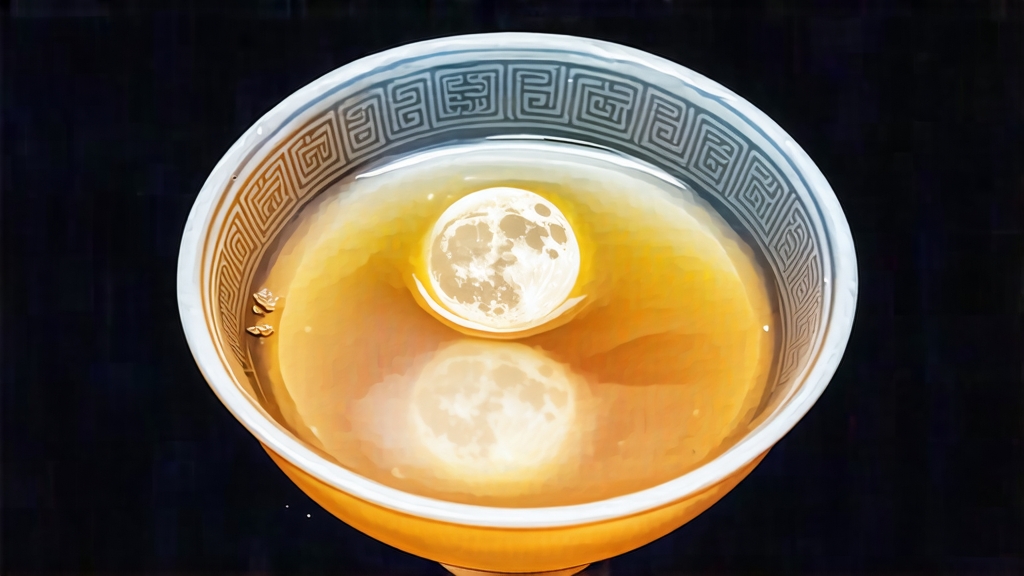
Tucked high on the mist-capped ridges of Yunnan’s southern mountains, where the Mekong carves silver ribbons through subtropical forest, a tea is picked only when the moon hangs fullest. Villagers call it Yue Guang Bai—literally “Moonlight White”—a name that sounds like poetry but encodes centuries of botanical instinct and quiet craftsmanship. Unlike its more publicized cousins Bai Hao Yin Zhen (Silver Needle) and Bai Mu Dan (White Peony) from Fujian, Moonlight White is a reclusive star in the white-tea constellation, born from the province’s indigenous Da Ye (large-leaf) assamica cultivar and finished under a cloak of darkness. To international drinkers who equate “white tea” with delicate Fujian buds, Yue Guang Bai offers a gentle shock: broader leaves, a dusk-colored liquor, and a flavor that oscillates between fresh lychee and warm hay, all stitched together by a lingering honey note that seems to glow on the palate long after the cup is empty.
Historical records in Yunnan are oral more than inked, yet elderly tea masters recount that moonlight-withering began during the late Qing dynasty, when caravan merchants needed a tea that could survive the humid trek to Tibet without molding. By laying the leaves on bamboo trays under the cool, dry light of the full moon, farmers discovered that oxidation slowed to a glacial pace, preserving the silver down while coaxing a deeper, almost amber sweetness. The practice faded during the collectivized 1960s, then resurfaced in the early 2000s when boutique producers searching for distinctive terroir-driven teas stumbled upon the forgotten technique. Today, small gardens in Jinggu, Lincang, and Simao counties revive the nocturnal ritual, balancing ancestral memory with modern food-safety protocols.
Botanically, Moonlight White is a shape-shifter. The upper bud and first two leaves are plucked between late March and mid-April, when the assamica leaf is still tender enough to fold without cracking, yet already larger than any Fujian white-tea picking standard. The back of each leaf is cloaked in a silvery pubescence that catches moonlight like frost on slate. Once harvested, the leaves are spread no thicker than two fingers on screened trays set in open-walled barns oriented toward the southeast breeze. Here the first and most critical phase—moonlight withering—begins at dusk and continues until dawn for cycles that may last three to five nights, depending on humidity. Temperature hovers between 18 °C and 22 °C; enzymatic oxidation proceeds so slowly that the leaf edges turn an oxidized cocoa while the midrib remains viridian, creating the tea’s signature “two-tone” appearance: one side dark umber, the other moon-silver.
Unlike green tea’s kill-green high heat or black tea’s aggressive rolling, Moonlight White is coaxed rather than compelled. At sunrise the leaves are gently fluffed, then returned to shaded shelves for daytime withering under diffused sunlight—never direct—allowing internal moisture to migrate outward. No rolling, no baking, no charcoal firing; the final “fix” is simply a warm draft of 35 °C air for twenty minutes, just enough to drop residual moisture to 8–9 %. The result is a leaf that retains its enzymatic vitality, ready to age gracefully for years if stored cool, dry, and away from odors.
The dry leaf aroma is subdued: think sun-dried mango skin, a trace of white pepper, and something elusive like the scent of a distant jasmine vine carried on night wind. When brewed, the liquor ranges from pale champagne at first infusion to deeper topaz by the fourth, a color spectrum that mirrors the lunar cycle itself. The cup opens with a cool, almost mint-like lift, then unfolds into ripe apricot, sweet alfalfa, and a hint of wet slate minerality borrowed from Yunnan’s iron-rich soils. Most captivating is the texture: a weightless viscosity that Chinese tasters describe as “lingering cloud,” a vapor of honey that seems to hover above the tongue long after swallowing.
To unlock these nuances, water is everything. Use spring water low in minerals—TDS around 50 ppm—brought to 85 °C. A 120 ml gaiwan or 200 ml glass teapot allows space for the large leaves to unfurl. Begin with